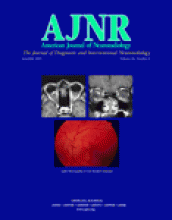Abstract
BACKGROUND AND PURPOSE: The advent of new anti-angiogenic therapies has created the need for better defining regions of abnormal vascularity in order to add specificity to the classification of high-grade gliomas. This study investigated MR imaging parameters corresponding to the peak height and percent recovery of the T2* relaxivity curve to characterize angiogenesis and microvascular leakage within the T2 and contrast-enhancing abnormalities in high-grade gliomas.
METHODS: Dynamic susceptibility-weighted MR imaging was performed in 41 patients with untreated high-grade glioma during the first pass and recirculation phase of a gadolinium bolus injection. Normalized peak height and percent recovery of the post-bolus signal were calculated on a voxel by voxel basis within the T2 and contrast-enhancing lesions (T2L, CEL) and compared between grade III and grade IV gliomas.
RESULTS: Grade IV gliomas showed significantly larger volumes of abnormal peak height and recovery compared to grade III patients (P < .01). Within the CEL, grade IV gliomas exhibited significantly higher peak height values than grade III patients (P < .05). Enhancing grade III patients (n = 7) demonstrated higher minimum values of percent recovery within both regions compared to grade IV patients. Non-enhancing grade III gliomas (n = 11) had significantly elevated minimum percent recovery values when compared to the T2L–CEL region in grade IV patients (n = 23; P < .05).
CONCLUSION: Direct measurement of the spatial distribution of tumor microvasculature characteristics has shown considerable heterogeneity within different regions of grade III and grade IV gliomas. Peak height and percent recovery parameters help to improve the specificity for characterization of the degree of angiogenesis and microvascular leakage in these tumors and may be useful in evaluating response to treatment.
- Copyright © American Society of Neuroradiology












